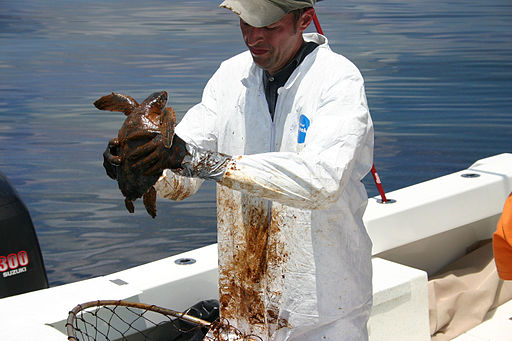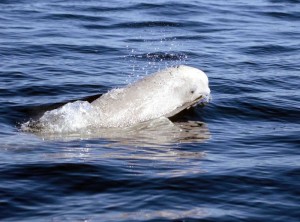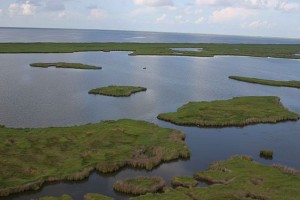Deepwater Horizon: Five Years On
It is clear that Gulf’s wildlife is still feeling the effects of the disaster. A federal judge will soon decide the case against BP and other companies for violations of the Clean Water Act.
 Image: By NOAA's National Ocean Service (Flickr: Turtle Rescue and Rehabilitation) [CC BY 2.0 (http://creativecommons.org/licenses/by/2.0)], via Wikimedia Commons
Image: By NOAA's National Ocean Service (Flickr: Turtle Rescue and Rehabilitation) [CC BY 2.0 (http://creativecommons.org/licenses/by/2.0)], via Wikimedia Commons Five years ago, the Deepwater Horizon oil rig exploded and sank in the Gulf of Mexico. Eleven people were killed, and the resulting oil spill was the worst in US history. By the time the well was capped, after 87 days, an estimated 3.19 million barrels of oil had leaked into the Gulf. The oil spread throughout the water column. Some floated to the surface to form oil slicks which spread quickly by being pushed by winds. Some remained in the middle layer, formed because chemical dispersants released into the water to break up the oil allowed it to mix with seawater and stay suspended beneath the surface. Some oil sank to the sea floor by gluing together particles in the water, such as bacteria and phytoplankton, and falling as “marine snow” causing damage to deep sea corals.
The impact of the oil spill on the local wildlife was immediately visible. Sea turtles and dolphins stranded on beaches, fish lay belly-up in brown sludge, and seabirds’ feathers were covered in oil, impeding their ability to fly, feed and find food.
With the five year anniversary approaching, on 20th April, a new report by the National Wildlife Federation has examined how 20 species of wildlife are faring in the aftermath. “Five years later, wildlife in the Gulf are still feeling the impacts of the oil spill,” said Collin O’Mara, president and CEO of the National Wildlife Federation. “The science is clear that this is not over – and sea turtles, dolphins, fish, and birds are still suffering from the fallout.”
Five Years and Counting: Gulf Wildlife in the Aftermath of the Deepwater Horizon Disaster reports the following.
- Dolphins on the Louisiana coast were found dead at four times historic rates in 2014, and there is increasing evidence that these ongoing deaths are connected to the oil spill.
- Prior to the spill, the number of endangered Kemp’s ridley sea turtle nests found annually was increasing rapidly, but since 2010, the nests found annually have declined on average.
- Exposure to oil has been shown to cause abnormal development in many species of fish, including mahi mahi, Gulf killifish and bluefin and yellowfin tuna.
- Comprehensive modelling estimates that 12% of the brown pelicans and 32% of the laughing gulls in the northern Gulf died as a result of the oil spill.
- Oil and dispersant compounds have been found in the eggs of white pelicans nesting in three Midwestern states – Minnesota, Iowa and Illinois.
- Spotted seatrout, also known as speckled trout, spawned less frequently in 2011 in both Louisiana and Mississippi than in previous years.
- 2010 and 2011 had the lowest numbers of juvenile red snapper seen in the eastern Gulf fishery since 1994.
- Coral colonies in five separate locations in the Gulf – three in the deep sea and two in shallower waters – are showing signs of oil damage.
- Sperm whales are spending less time foraging in the area around the wellhead.
It is clear that Gulf’s wildlife is still feeling the effects of the disaster. A federal judge will soon decide the case against BP and other companies for violations of the Clean Water Act. This will fund projects to restore wetlands, rebuild oyster reefs and protect landscapes – necessary actions to enhance the health of the Gulf to benefit local people as well as wildlife. As O’Mara notes: “Holding BP fully accountable and using all fines and penalties to restore the Gulf of Mexico must be a national priority.”





No comments yet.